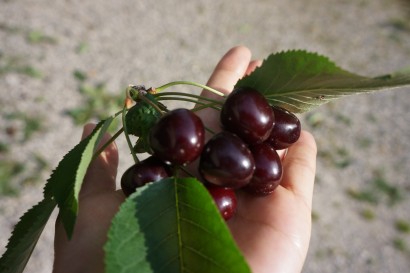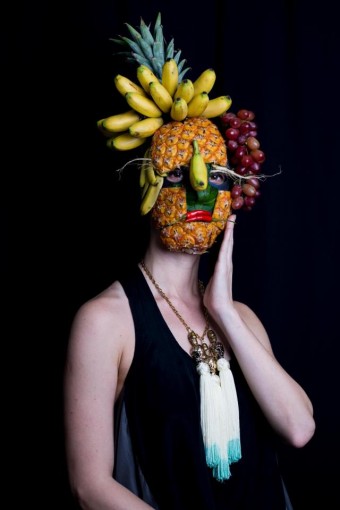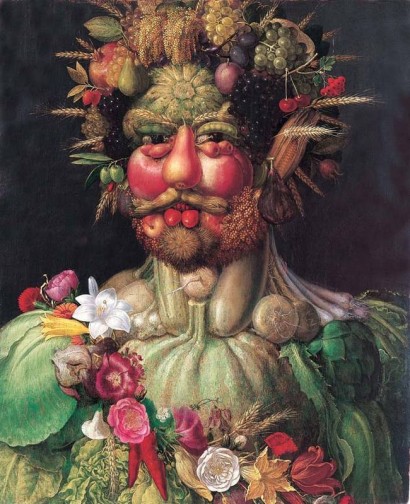It can be frustrating to ask an Italian colleague about food. ‘Francesco, which brand has good limoncello (an Italian lemon liqueur)?’ ‘I don’t know…My brother makes limoncello for us with fresh lemons from South Italy.’ ‘Francesco, which red wine is the best in the region?’ ‘Um…My parents make excellent red wine!’
Of course, there are also surprises and happy moments. ‘Francesco, where can I find good jam? At a farmer’s market or in a delicatessen?’ ‘My mom is making cherry jam these days. You can pick up a jar if you go visit our farm!’
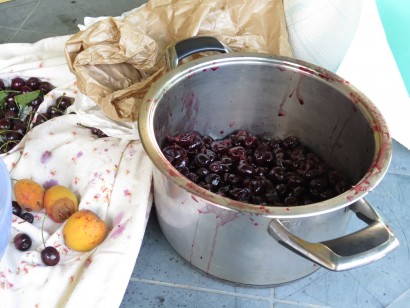 [50% Cherries fresh off the tree + 50% sugar = super delicious cherry jam! Simple as that. ]
[50% Cherries fresh off the tree + 50% sugar = super delicious cherry jam! Simple as that. ]
Yes, I am going to write about FOOD again – it’s Italy! But my focus is not the consumption of food. In the past month, I notice that many Italian friends also care a great deal about the culture and politics around the production and distribution of food. On the other side of the world, Hong Kong has also seen the growth of such awareness in the past years, as reflected in cases ranging from farmland preservation movements to food rescue and food assistance programs. It seems like the connections between land, food and people have been reflected on everywhere. Here I will compare 3 Italian cases introduced by my colleague Francesco with relevant cases in Hong Kong.
1. [When we talk about FRESHNESS]
Raw milk vending machine VS Soya product shop/workshop
[當我們談到新鮮]
超新鮮牛奶販賣機 VS 前舖後廠豆漿舖
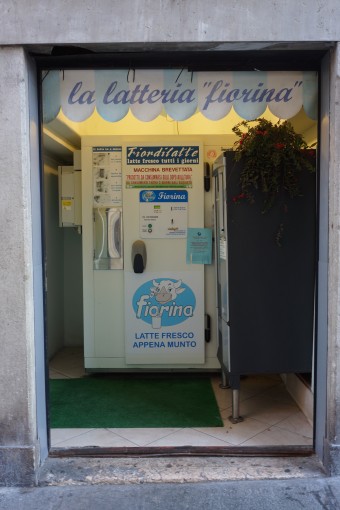 [milk vending machine (distributori di latte) in the historical center of Mantova, Lombardy, Italy]
[milk vending machine (distributori di latte) in the historical center of Mantova, Lombardy, Italy]
Passing by this cute little machine got Francesco very excited. He put down his empty bottle, put in 50 cent euro (4.3HKD!) and pushed the ‘0.5 Litre’ button. ‘Dai! (‘Come on’ in Italian) Try this milk! It was probably still in a cow’s body several hours ago! It is micro-filtered but not pasteurized so you’d better to drink it fresh. Or you can quickly put it in the fridge and drink within 2 days. And don’t worry about sanitation – it meets all the sanitary requirements.’ The drinking experience subverted my perception of milk. Though in fact fatter than most pasteurized milk, the raw milk tasted very refreshing, almost sweet.
An alternative way of producing and distributing milk, the raw milk vending machine successfully found its home in most provinces over Italy. On top of high quality and competitive price, it also shares more profit with the farmers and encourages less plastic waste. However, competitive price also means huge pressure from monopolies. For instance, the plan to install some machines in Venice was faced with many obstacles, including both logistic difficulties and objection from other milk retailers.
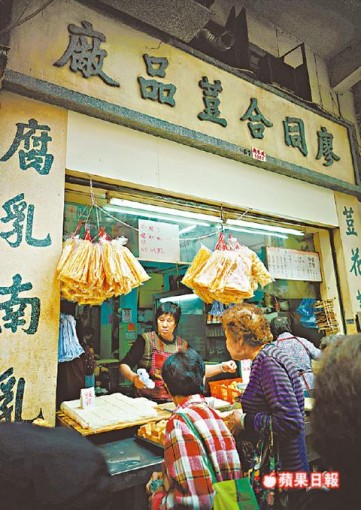 [soy product shop/workshop in Mong Kok, Hong Kong; image courtesy: Apple Daily]
[soy product shop/workshop in Mong Kok, Hong Kong; image courtesy: Apple Daily]
While I do enjoy the cow milk here in Italy, I still miss the freshly made soya milk in Hong Kong. In many old residential districts such as Sai Ying Pun and North Point, you can find soya product shops with a workshop at the back. Made freshly without any preservative, their soya milk can stay in the fridge for only 1 to 2 days. You can usually choose from yellow soya milk and black soya milk, sweetened or unsweetened. I also love grabbing a bowl of beancurd jelly for dessert, which can be served either cool or warm.
 [Beancurd jelly with brown sugar; image courtesy: Apple Daily]
[Beancurd jelly with brown sugar; image courtesy: Apple Daily]
2. [When we talk about FARM]
Roadside farm stand VS Creative farm
[當我們談到農場]
路邊菜檔 VS 創意農場
When we were driving in the countryside of Province Mantova, Italy, a little island of seasonal fruits and vegetables suddenly caught our eyes. It is a roadside farm stand! The produce all comes straight from the young couple’s farm and has never been stored in the fridge. We chatted with the owners and bought three melons, whose wonderful smell kept us refreshed all the way.
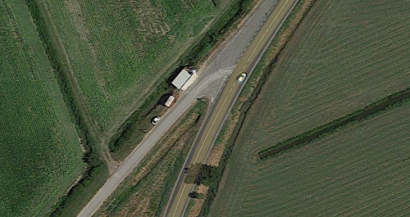 [There! The roadside farm stand we saw! Image courtesy: Google Map]
[There! The roadside farm stand we saw! Image courtesy: Google Map]
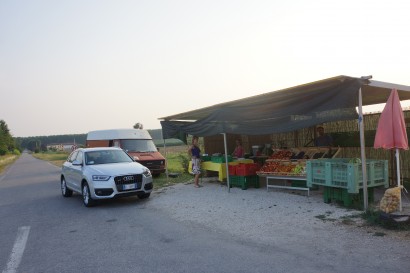 [Most customers come in a car and shop groceries for a whole week.]
[Most customers come in a car and shop groceries for a whole week.]
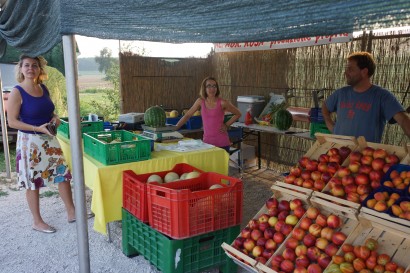 [July is the season of melon, watermelon and peach.]
[July is the season of melon, watermelon and peach.]
It is not hard to imagine that tens of thousands of such farm stands directly sell their products in a country so proud of and famous for quality agriculture. But do you know that Hong Kong, a city often labelled as a concrete jungle, is also home to several small yet charming farms? Often experimental bases for alternative food culture and lifestyles, they organize a great variety of events to engage city dwellers, such as farm tours, farmers’ markets, farming/photography workshops, movie screenings, and exhibitions, etc. Interestingly, the farming community and art circle in Hong Kong are highly interwined. If you are going to Echigo-Tsumari Triennial in Japan this summer, don’t forget to check out the art project by Sangwoodgoon, a Hong Kong farm collective founded by photographer Jenny Li and part-time culture studies lecturer Chow Sze-chung!
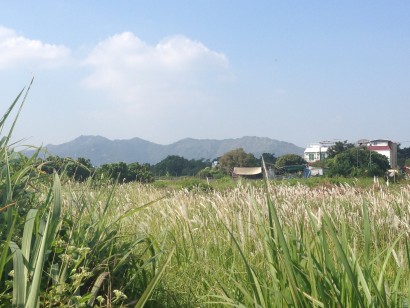 [Located in New Territories and surrounded by hills, Sangwoodgoon farm enjoys fresh wind and ample sunshine.]
[Located in New Territories and surrounded by hills, Sangwoodgoon farm enjoys fresh wind and ample sunshine.]
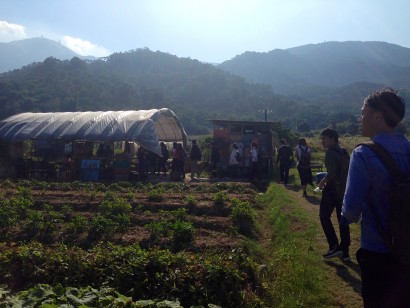 [A group of high school art students explored Sangwoodgoon and the stories of the land during a Learning Lab session by Asia Art Archive.]
[A group of high school art students explored Sangwoodgoon and the stories of the land during a Learning Lab session by Asia Art Archive.]
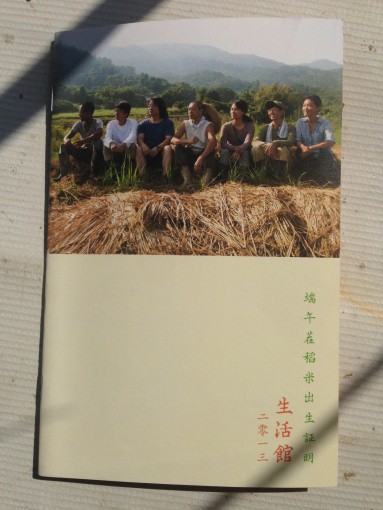 [A unique ‘birth certificate’ is designed for rice harvested at Sangwoogoon each year.]
[A unique ‘birth certificate’ is designed for rice harvested at Sangwoogoon each year.]
While some Hong Kongers turn to the hills and fields, some break new ground in residential areas, like how Venetians grow herbs and flowers in sun-filled terraces, balconies, ‘altana’s and sills. For instance, designer Michael Leung founded HK Farm in 2012, an organization that grows local food on rooftops, connects various forces (for instance, the organic soil on their rooftop farm comes from Mapopo, another creative farm in New Territories), and promotes urban farming in creative ways. Also an artist collective, HK Farm is currently in residency at Spring Workshop in Wong Chuk Hang, where they have grown a garden of herbs amongst a sea of industrial buildings.
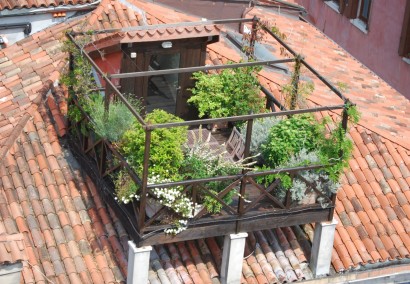 [A typical ‘altana’ in Venice; image courtesy: Alloggi Barbaria Blog]
[A typical ‘altana’ in Venice; image courtesy: Alloggi Barbaria Blog]
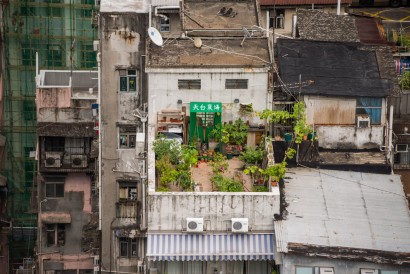 [HK Farm rooftop farm in Yau Ma Tei, an old and densely-populated district of Hong Kong; image courtesy: HK Farm]
[HK Farm rooftop farm in Yau Ma Tei, an old and densely-populated district of Hong Kong; image courtesy: HK Farm]
[In 2012 HK Farm collaborated with photographer Glenn Eugen Ellingsen in the exhibition Planet Face, where they exhibited funky portraits of HK Farm members to sparkle discussions relating to food locality and urban farming. The portraits are clearly inspired by Italian painter Giuseppe Arcimboldo’s signature paintings from the 16th century!]
Some visitors to the exhibition asked us how Hong Kong moved on since Umbrella Movement. I would say that although there are no more tents or mini farms on Harcourt Road, down-to-earth experiments with alternative lifestyles such as urban farming continued to sprout.
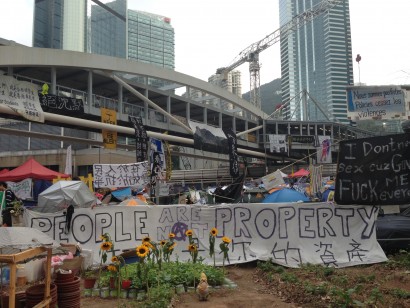 [Some took over a small piece of land intended for government planting on Harcourt Road during Umbrella Movement in the fall of 2014. ]
[Some took over a small piece of land intended for government planting on Harcourt Road during Umbrella Movement in the fall of 2014. ]
3. [When we talk about FOOD MOVEMENT]
當我們談到食物運動
Slow Food VS Green Monday

Dining in an Italian restaurant and wondering what this colourful whirl-shaped symbol and ‘Presìdí Slow Food (Slow Food Presidia)’ sign on a menu means? Founded in Italy in 1989 to counteract fast food and fast life, Slow Food has morphed into a global organization/movement (there is a chapter in Hong Kong too!) that aims to preserve local food cultures and traditions. One among Slow Food’s various initiatives, Presidia project identifies valuable small-scale quality products made in traditional methods and works with its producers to safeguard them. If you wanna try them in Venice, I recommend CoVino, a tiny and cozy restaurant/wine bar near Arsenale that serves dishes using Slow Food Presidia ingredients as well as other fantastic options. Aside from eating the products, one can also support the projects by following the Slow Food maps and visiting the production sites. On Island Sant’Erasmo, an long-time farm/garden of Venice, you can find a Slow Food presidium where Sant’Erasmo Violet Artichokes are grown.
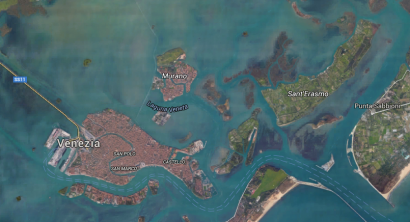
[Notice the contrast in color between the mainland of Venice on the left and Sant’Erasmo on the right; image courtesy: Google Map]
While Slow Food Presidia puts great emphasis on the production process, Hong Kong’s big-scale food movements usually focus more on distribution, consumption and redistribution as Hong Kong is not a big agriculture producer. One of the most visible food-movement logo in Hong Kong is that of Green Monday, a social enterprise established in 2012 to promote green, healthy and sustainable living. Rather than working with food producers and small restaurants, their main collaborators and targets are corporations, restaurants, schools and the general public. For instance, many chain fast food restaurants, university canteens and even some restaurants at Hong Kong International Airport offer vegetarian dishes every Monday.
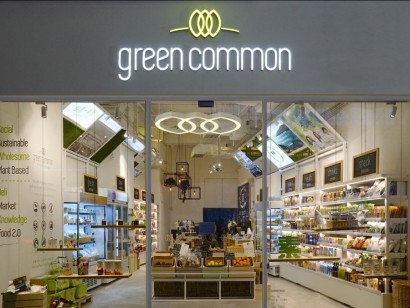 [Green Monday’s plant-based concept store in Wanchai, Hong Kong not only sells products but also holds talks, workshops and cooking classes about mindful eating and living.]
[Green Monday’s plant-based concept store in Wanchai, Hong Kong not only sells products but also holds talks, workshops and cooking classes about mindful eating and living.]
Further reading:
- milk vending machine in Italy (distributori di latte)
- Sangwoodgoon
- Mapopo Community Farm
- Michael Leung
- HK Farm
- Slow Food
- Slow Food Presidia
- Altana in Venice



